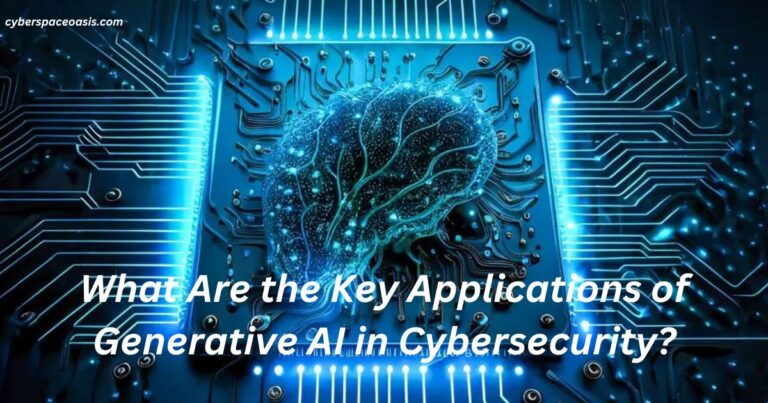
In the ever-evolving panorama of cybersecurity, staying ahead of today’s threats calls for revolutionary and adaptive solutions.
One such groundbreaking generation that is poised to revolutionize cybersecurity defenses is Generative AI.
This superior form of synthetic intelligence, that may create new content material and patterns from existing statistics, holds large ability to enhance and rework the way we guard our virtual infrastructures.
Understanding Generative AI
Generative AI, in particular through models like Generative Adversarial Networks (GANs) and Variational Autoencoders (VAEs), is designed to generate new statistics that is much like a given set of inputs.
While GANs consist of two neural networks—the generator and the discriminator—competing against every exceptional to enhance statistics generation, VAEs encode input records right into a latent space after which decode it back, producing new, similar records.
Enhancing Threat Detection
One of the maximum massive approaches Generative AI can remodel cybersecurity defenses is through greater fantastic threat detection.
Traditional techniques often rely upon predefined signatures or anomaly detection systems, which can fall quick at the same time as handling novel or sophisticated attacks.
Generative AI can cope with this hollow by means of the usage of studying and mimicking complex types of malicious sports, thereby identifying subtle and previously unseen threats.
For example, thru producing sensible simulations of cyberattacks, protection structures can be educated more successfully to understand and mitigate those threats in actual-time.
Predictive Analysis and Proactive Defense
Generative AI also may be instrumental in predictive evaluation, permitting a shift from reactive to proactive cybersecurity strategies.
By studying good sized quantities of ancient information, generative models can forecast potential attack vectors and vulnerabilities in advance than they may be exploited.
This predictive capability lets in organizations to bolster their defenses and implement countermeasures earlier of time, considerably lowering the hazard of a hit breaches.
Strengthening Incident Response
In the occasion of a cybersecurity incident, fast and correct reaction is important. Generative AI can help in this area with the resource of automating and optimizing incident response techniques.
For instance, generative models can simulate diverse reaction conditions, offering protection companies with actionable insights and strategies to incorporate and remediate threats more effectively.
This now not pleasant minimizes the impact of assaults but also complements the overall resilience of the cybersecurity infrastructure.
Advanced Threat Hunting
Threat looking, the proactive look for hidden threats within a network, may be extensively stronger through Generative AI.
By producing practical representations of network web site visitors and consumer conduct, generative models can assist protection analysts discover hidden anomalies and malicious sports activities that conventional gadget may pass over.
This deeper level of evaluation results in greater effective identity and neutralization of advanced continual threats (APTs) and other modern cyber adversaries.
Challenges and Considerations
While the ability of Generative AI in remodeling cybersecurity defenses is huge, it’s miles vital to renowned the annoying conditions and issues related to its implementation.
One of the primary problems is the danger of unfavorable assaults, wherein attackers use Generative AI to create state-of-the-art malware or to deceive security systems.
To mitigate this hazard, it is crucial to continuously update and refine generative models, making sure they stay robust and resilient against such hostile strategies.
Additionally, the integration of Generative AI into existing cybersecurity frameworks calls for sizable funding in phrases of assets, knowledge, and infrastructure.
Organizations need to additionally address moral and privacy concerns associated with the use of AI-generated statistics, ensuring compliance with relevant regulations and requirements.
Conclusion
Generative AI holds the promise to revolutionize cybersecurity defenses, offering superior danger detection, predictive evaluation, stepped forward incident response, and advanced threat searching talents.
As cyber threats preserve to adapt in complexity and sophistication, the adoption of Generative AI can offer a effective thing in safeguarding digital property and infrastructures.
However, it’s miles important to technique this era with a balanced perspective, addressing the related traumatic conditions and making sure its accountable and ethical use.
By doing so, corporations can harness the full potential of Generative AI to assemble sturdy and adaptive cybersecurity defenses for the destiny.




